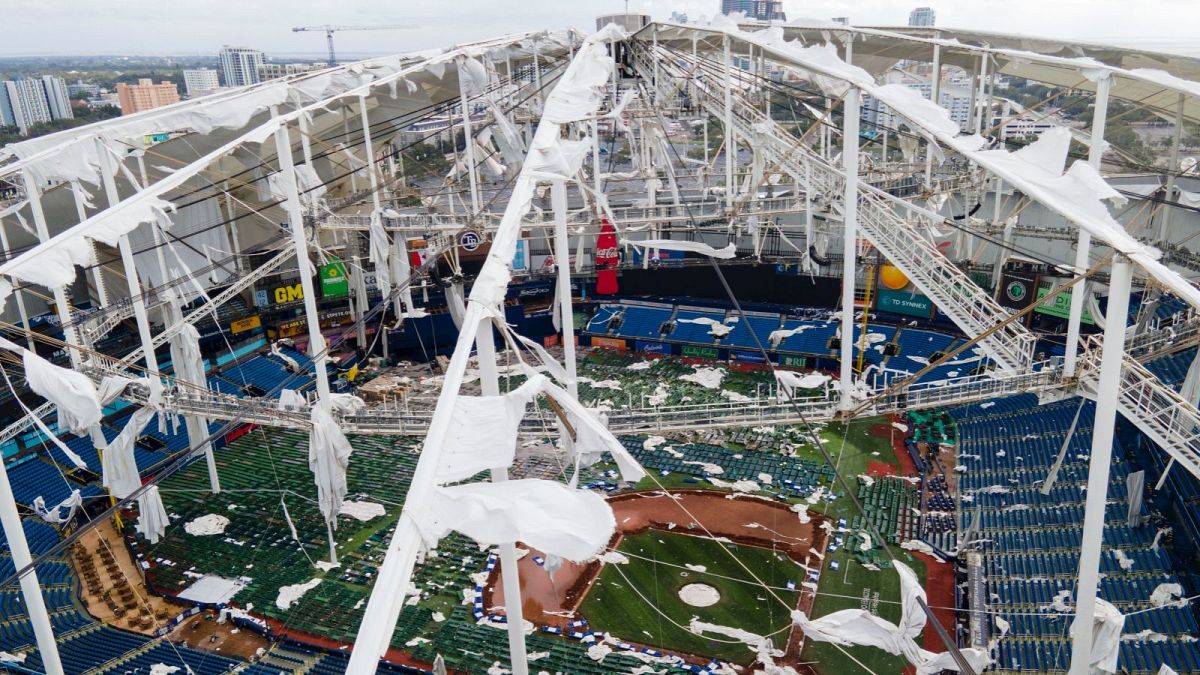FIFA world cup stadiums at risk of €760m climate damage, report finds

Wales’s Principality Stadium and Spain’s Estadio Benito Villamarín are some of the most imperilled venues.
Sports stadiums are iconic focal points for cities and fans, but they are coming under increasing and costly threat from climate change.
Under a high-emissions scenario, extreme weather could cost dozens of the world’s biggest football venues $800 million (€760mn) by 2050.
That’s according to a new report from data analytics firm ClimateX, which analysed the risk to all 12 of next year’s FIFA World Cup stadiums in the US, plus Europe’s 25 largest football venues.
“This data is a stark reminder of the mounting threats climate change poses to the infrastructure underpinning global events,” says Lukky Ahmed, CEO of Climate X.
“As we celebrate the world’s love for football, we must also confront the sobering reality that some of the sport’s most cherished venues are at risk.”
The study evaluated the impact of 10 climate hazards, including flooding, wildfires, drought, and extreme heat on the 37 major stadiums.
It’s worth noting that the warming scenario it used, known as RCP8.5, was intended by the IPCC researchers who developed it to represent a very high emissions situation.
It is not the most likely scenario, but Ahmed’s point stands: “Stakeholders must take immediate action to safeguard these assets and ensure the sustainability of future events.”
Which of Europe’s sports stadiums are most at risk from climate change?
One of the most dramatic images to emerge in the wake of Hurricane Milton in October was of Florida’s Tropicana Field (“The Trop”) stadium – its white fibreglass roof blown to rags.
The US state will remain on the frontline of football’s climate crisis, according to Climate X. Inter&Co Stadium and Camping World Stadium, both in Orlando city, ranked highest on the company’s scale for hazard exposure in the coming years.
In Europe, Principality Stadium in Cardiff, Wales, and Estadio Benito Villamarín in Seville, Spain, are also at high risk from flooding and heat.
By 2050, ClimateX forecasts that hazard exposure will intensify, with the Velodrome in France and Oaka Stadium in Greece joining the Seville stadium and other US venues at the top of the rankings.
Each stadium’s risk was ranked based on its total loss in dollars and percentages, comparing projected damages from climate hazards to the stadium’s current replacement cost and its known vulnerabilities.
To protect themselves, some stadiums are wisely investing in smart design and natural barriers, ClimateX notes. As well as working to reduce their own hefty carbon footprints – installing solar panels and harvesting rainwater, for example.
Related
Barcelona and Bayern Munich ‘offered the chance to sign Neymar…
Neymar made an emotional return to his boyhood club Santos last monthThe 33-year-old has been linked with a European football comeback next term L
European reaction, Premier League team news and more: football –…
Key eventsShow key events onlyPlease turn on JavaScript to use this featureSouthampton: With the teams separated by 52 points, Southampton face a daunting weeke
Ineos plan for Manchester United is putting them at odds…
Sir Jim Ratcliffe is making another round of redundancies at Manchester United but the sharp drop in staff is at odds with European rivals who are adding to the











